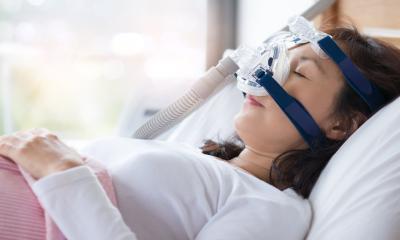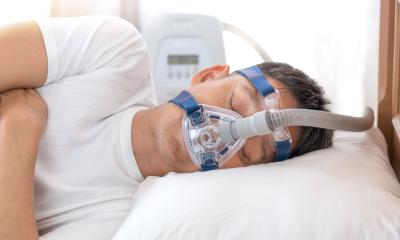A hundred years of ventilation
On 6 October 1907, engineer Heinrich Dräger received the first ever patent for a mechanical ventilation machine — the Pulmotor. His invention revolutionised ventilation and expanded the range of products offered by Lübecker Bierdruckapparate- und Armaturenfabrik Heinr. Dräger. It might appear hard to equate today's state-of-the-art ventilation equipment, which uses computing and monitoring technology, with that mechanical ventilation prototype, yet the technology behind it remained standard for decades and is still the basis of modern ventilation systems. Meike Lerner spoke with hospital specialist Dr Ernst Bahns and Ernst Schubert, product management director in Dräger's intensive care department, about the success story of artificial ventilation.
Heinrich Dräger's concept for the first Pulmotor was ahead of its time, for he was the first to choose a mechanical principle that could closely copy human physiology.
‘Unlike other manufacturers he used time-rather than pressure-controlled mechanical ventilation,’ Dr Bahns explained. Patented in 1907, the first model was only a prototype and not generally in hospital use. Only further developments and modifications of the breathing connector and the control mechanism – carried out by his son Bernhard Dräger, and engineer Hans Schröder – made serial production of the model possible, from 1908.
Five years later, around 3,000 Pulmotors were in use; by 1946 the number had risen to 12,000. Over the years the machine was repeatedly modified and sold by Dräger until the 1980s. However, in the mid-70s, the Pulmotor was finally replaced by ventilators in the Oxylog series.
‘A significant innovation in mechanical ventilation finally took place at the beginning of the ’80s with the arrival of computer technology. This allowed precise control of the flow of breath and upgraded integrated breathing monitoring,’ Dr Bahns explained.
Dräger implemented this new technology for the first time in their EV-A series. Although there were monitors that could be connected to ventilators, these were the first artificial ventilators with integrated graphical monitoring. Other manufacturers took another 15 years to do this. ‘Since then, it became the general standard in intensive ventilation,’ Ernst Schubert added. ‘The main motivation in developing ventilation systems further has always been to improve how they are tolerated by patients. An important step in this direction was made at the end of the ‘80s with the introduction of the new ventilation procedure BIPAP, which made it possible, for the first time, for a patient to breathe spontaneously during artificial ventilation. The patient was therefore given more freedom and the conditions for gas exchange were improved significantly. The result: Reduction of damaging side effects of mechanical ventilation on the lungs and the cardiovascular system.’
As pointed out by Dr Bahns, over the decades, developments in ventilation procedures not only became more patient oriented but also more user friendly.
Today’s systems utilise the knowledge of clinical staff – regarding weaning, for example. The correct treatment parameters are usually set according to a certain scheme. Such guidelines can now be put into practice aided by computers that analyse a patient’s condition and develop an appropriate treatment plan. Dräger advanced this concept with its SmartCare/PS system: the computer is authorised to implement the actions set out in the treatment plan and control the ventilator. Studies have shown that, on average, this system helps to halve the time a patient takes to be weaned off the system.
In the face of today’s increasing hospital workloads, innovative technologies are needed that facilitate high mobility and fast access to patient data. ‘The future lies in completely networked systems that integrate across all areas of a hospital – patient monitoring, therapy and information management – and that control these processes via a central cockpit,’ Ernst Schubert said, adding that Dräger’s Infinity Acute Care System, first introduced at MEDICA 2006, meets those demands.
What lies in the future? ‘The technology will be further optimised due to increasingly more intelligent computer solutions,’ Dr Bahns predicted. ‘But, there have been some surprises in the history of mechanical ventilation over a 100 years, and most probably there will be surprises over the next 100.’
30.11.2007





